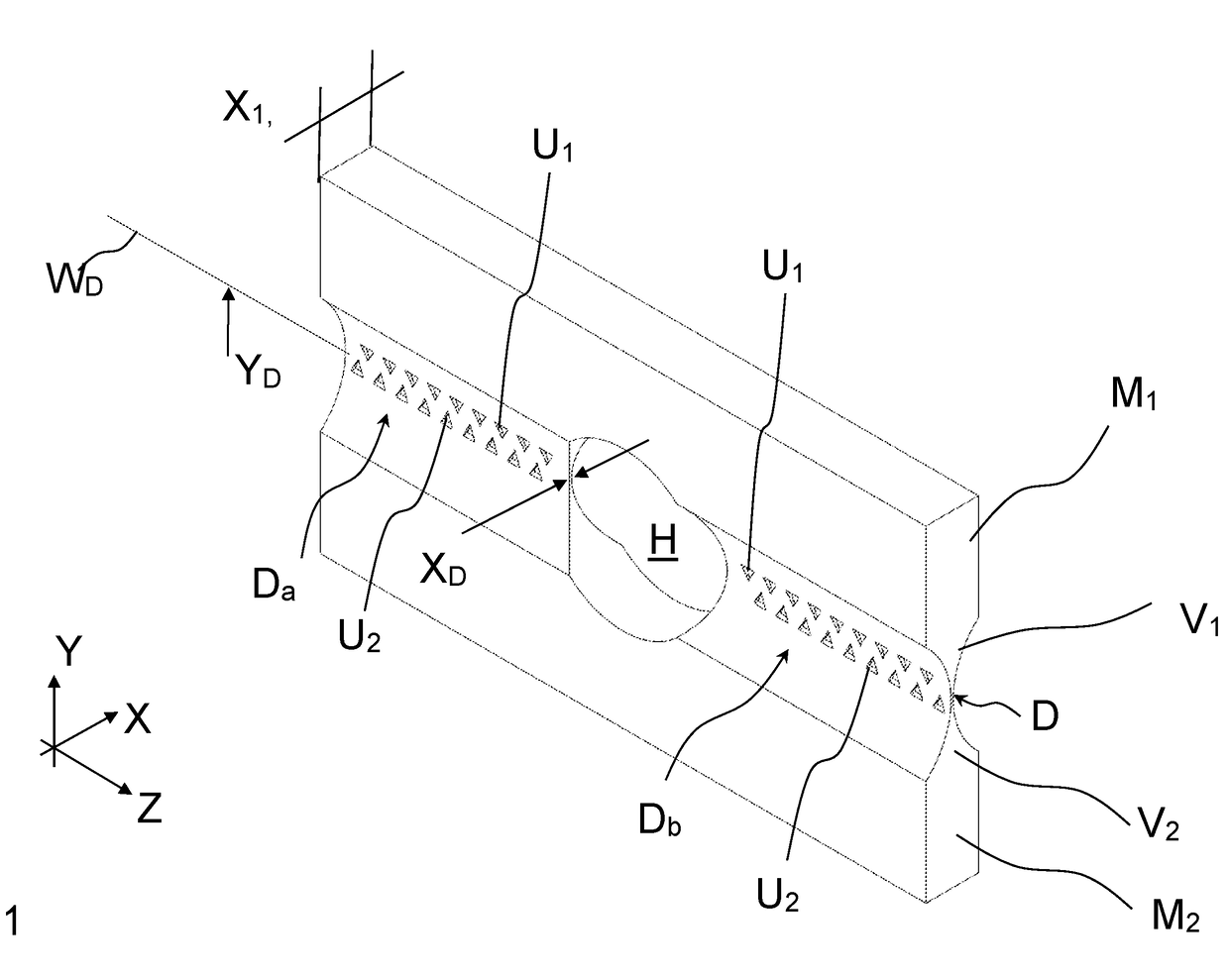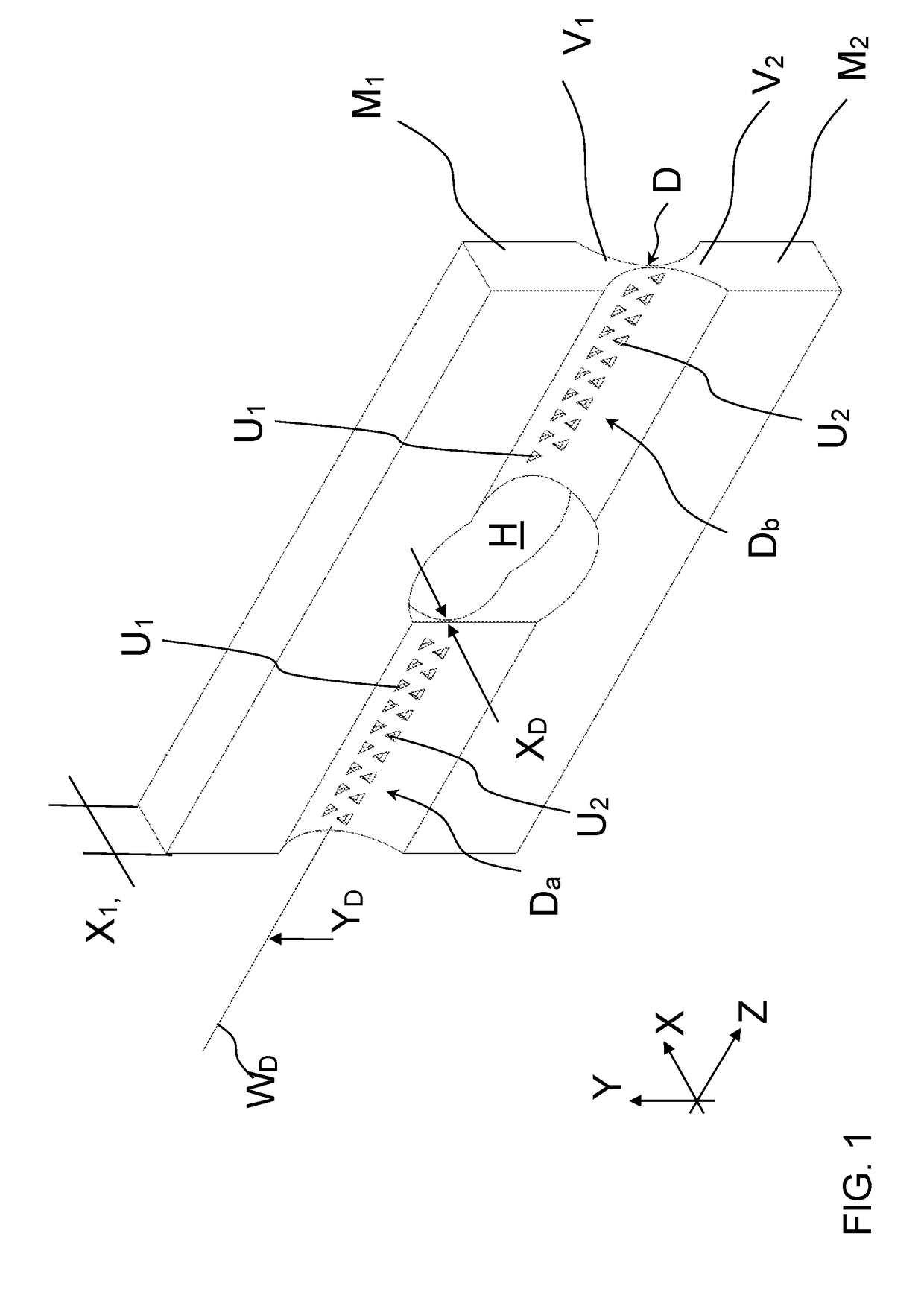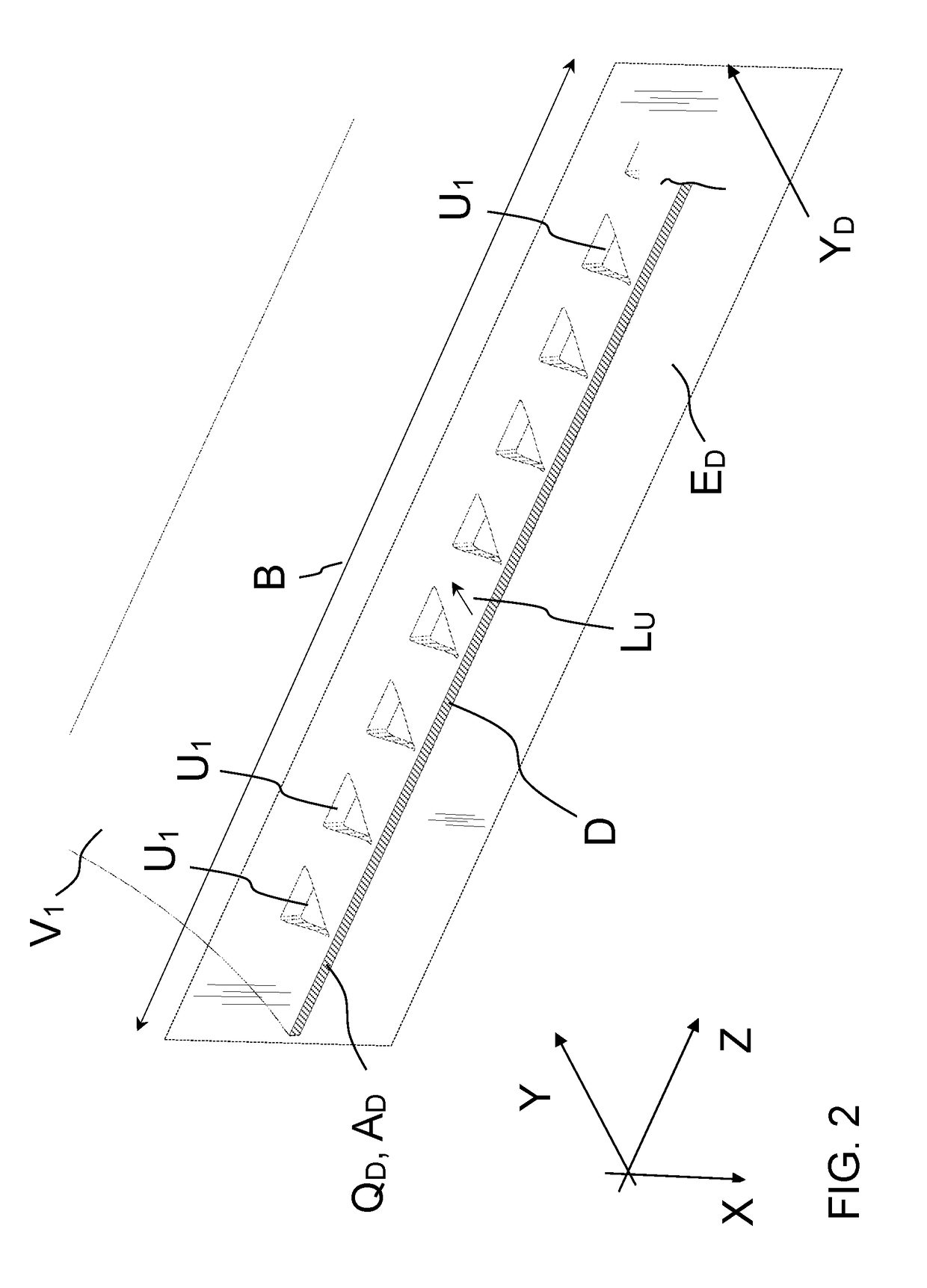Flexure Hinge
a technology of flexure hinges and hinges, applied in the field of flexure, can solve the problems of reducing strength with respect to normal stresses, bending stiffness, and inability to meet the demands of use, and achieve the effect of reducing production and calculation, and contributing to the stability of the hing
- Summary
- Abstract
- Description
- Claims
- Application Information
AI Technical Summary
Benefits of technology
Problems solved by technology
Method used
Image
Examples
Embodiment Construction
[0040]FIG. 1 shows a flexure hinge according to the invention in a simplified perspective view. The hinge comprises two material segments M1, M2, which are monolithically joined to each other via a thin spot D. The thin spot D is formed by two tapering sections V1, V2, which extend in a lengthwise direction Y toward each other as part of the material segments M1, M2, where the thickness measured perpendicular thereto in the X direction steadily decreases up to a minimal thickness XD, at which the actual thin spot D exists. It extends along a pivot axis WD in a width direction Z, which is perpendicular to the X and Y directions. The first material segment M1 can be pivoted with respect to the second material segment M2 about the thin spot D, where an idealized pivot axis WD runs in the Z direction at the lengthwise position YD of the thin spot D. An opening H made centrally in the thin spot D divides the thin spot into two segments Da and Db in the Z direction.
[0041]A plurality of re...
PUM
| Property | Measurement | Unit |
|---|---|---|
| Length | aaaaa | aaaaa |
| Thickness | aaaaa | aaaaa |
| Electrical resistance | aaaaa | aaaaa |
Abstract
Description
Claims
Application Information
 Login to View More
Login to View More - R&D
- Intellectual Property
- Life Sciences
- Materials
- Tech Scout
- Unparalleled Data Quality
- Higher Quality Content
- 60% Fewer Hallucinations
Browse by: Latest US Patents, China's latest patents, Technical Efficacy Thesaurus, Application Domain, Technology Topic, Popular Technical Reports.
© 2025 PatSnap. All rights reserved.Legal|Privacy policy|Modern Slavery Act Transparency Statement|Sitemap|About US| Contact US: help@patsnap.com



